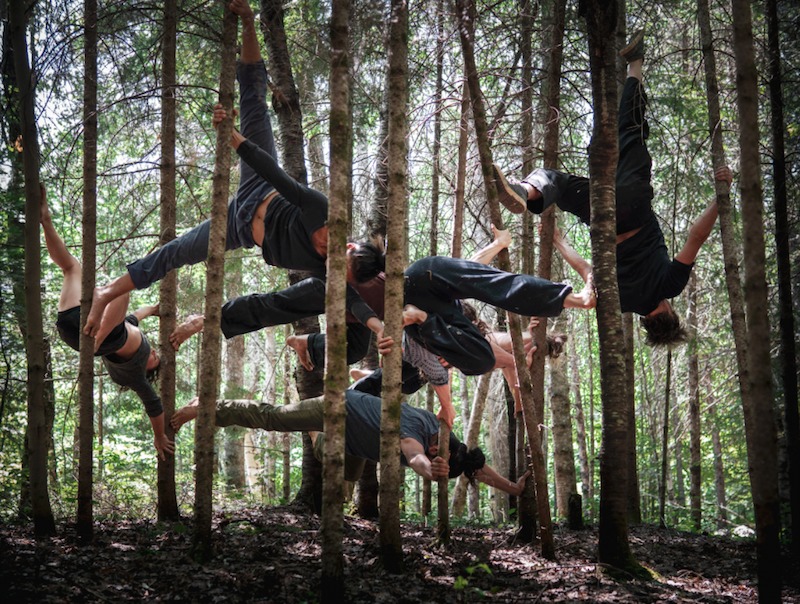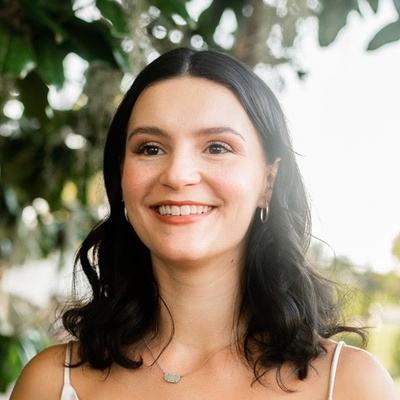Helping The Circus Celebrate Earth Day
In the world of circus, the whole Earth can be our stage. Local shows find their home all over the globe, bigger productions tour nationally, and even larger shows tour internationally. Yet this inherent need for travel has far-reaching consequences. With this being the case, the way the circus industry treats the Earth has a big impact. On this Earth Day, we focus on what one company is doing about it.
Cirque Barcode is stepping up and setting an example for how the circus industry can help make the world a better place by highlighting the climate crisis through the circus arts while increasing the sustainability of their shows. Their innovative new show Branché challenges everything from what it means to tour, to what qualifies as a stage.

We had the opportunity to talk with Eric Bates, co-founder of Cirque Barcode, along with Alexandra Royer, Tristan Nielsen, and Eve Bigel, about sustainability and circus in general. He gave us an inside look on the significance of Branché, how circus and nature are related, and what we can do now to do better.
Branché: The Artist and the Earth
“As circus artists, we fly all over the place doing Great Gatsby themed parties, televised talent shows, fashion galas- taking a lot of international flights to shine lights on ourselves. For those that are paying attention to the state of the world, this presents an existential dilemma. How can we continue to perform what we love, and use that stage to talk about the climate crisis, without doing damage to the very thing we’re trying to protect? The solution we came up with, through Branché, is to change our touring model altogether. No more planes. We have multiple casts in different countries so we can do land-based touring.
The show takes place in forests and parks, combining the inspirational power of the circus with the inspirational power of nature. In the spirit of ‘Think Globally, Act Locally’, we wanted to make a show that would have a large impact, but also get right down into the community level and bring people into their own backyards. We hope they will see the nature around them in a new way and not take it for granted, and also see other people from their own communities that out there with them and start a conversation- ‘Oh you care about this too? Maybe we should do something together.'”
Circus and Nature Together
“The show takes place in forests and parks. Since every forest is a little different, but also somewhat similar, we’ve designed it so the different scenes take place around features commonly found in every forest–a clearing, a large rock, a grove of young trees, or a giant old tree with sturdy branches. This allows every show to maintain the level of quality we want but also feel tailor-made to the space with just a day or two of work.
As far as the show itself goes, we wanted it to be a celebration of nature, rather than a lecture or something didactic. In broad strokes the dramaturgic line follows the arc humans have been playing out recently– carefree, happy and somewhat wreckless overconsumption of our resources and energy, a tipping point (that we’re approaching now) that leads to a collapse, and then a regrowth that is more in harmony with nature. Some of the scenes are inspired by issues related to climate change, like systemic collapse, or shrinking spaces due to sea level or temperature rise making some places inhabitable, and/or scarcity of resources and the interpersonal conflict that comes with that. We also have image-based inspirations–reeds in the wind, a tree made of bodies, etc. There’s also a real sense of magic and play that comes from romping around in the woods at any age.
When the audience first steps into the forest there’s this feeling of the lights going down at the beginning of a show. It’s intimate, they’re stepping into another world, sort of a ‘through the wardrobe’ feeling. There is one moment that stands out to me– we had an acrobat that did an act in a ‘drunken boxing’ style, flipping and flopping and falling all over the place. The kids loved it, and as we changed locations with the audience some of the kids were imitating him, laughing and throwing themselves about in the woods. If they’re imitating that, what’s to say they’re not imitating the rest of what they see in the show– humans caring for each other and the nature around them?”

Reduce Your Environmental Impact: Circus Edition
“A lot of the impact a show will have on the environment is baked in during the creation process– the props you make, the costumes, and especially the style of tour you plan on doing, since that will continue throughout the life of the show. After that I don’t think there’s ‘one quick trick’ for everyone. The current model we have for touring shows, and really just the world in general, isn’t set up to be environmentally responsible. It’s going to take a lot of constant, little efforts to change the framework until we arrive at a new normal. You can look at sites like ACT or Julie’s Bicycle for ideas of steps you can take. I believe in ‘imperfect action over perfect inaction.’ Don’t worry about getting it 100% right, just try to do a little better and celebrate whatever steps you’re able to take, then try to take another one.
Working with the MICC (through MCC) (and organizing the Climate & Circus group) has made me proactively seek out other groups that are trying to do something similar to what we at Cirque Barcode are doing with Branché. I’ve heard of a lot of initiatives like a bike-in performance in Italy, a man that works to incorporate green product placement into films. I learned more about how the Tohu has designed their building to be incredibly low impact, etc. Generally just hearing from people that are both much further down this road than we are and people that are just starting out, and hearing that range of advice and experience has been really helpful. One thing that gave me hope was that an agent that promotes sustainable tours for her artists put that mission on her website, and instead of it turning off people that wouldn’t want to hire her shows because of her more stringent requirements, it actually got her a lot of attention and people that wanted to work with her because of her mission.”
Resources Julie's Bicycle ACT EcoSceno Montreal The Arctic Cycle Acting for Climate The Centre for Sustainable Practice in the Arts Creative Carbon Scotland
Do you have a story to share? Submit your news story, article or press release.





